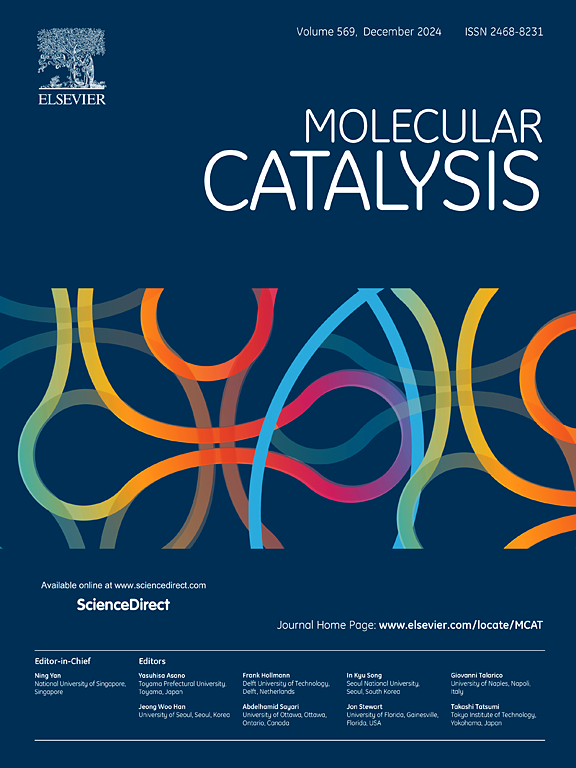多孔材料纳米金属催化剂的制备与应用研究进展
IF 3.9
2区 化学
Q2 CHEMISTRY, PHYSICAL
引用次数: 0
摘要
纳米约束催化因其具有提高催化性能的潜力而成为催化反应领域的研究热点。多孔纳米限制催化剂是通过多种合成方法将活性金属纳米颗粒分散到多孔载体中。这种催化剂可以利用孔隙的约束效应,精确调节金属颗粒的分散性和粒径,从而提高其催化活性和稳定性。在催化反应过程中,多孔材料中孔隙的约束效应可以有效地优化金属活性组分的电子态。此外,孔道的形状选择性可以显著提高反应产物的选择性。本文综述了近年来孔限制金属纳米催化剂的合成策略及其催化应用,探讨了孔限制效应提高催化剂活性、产物选择性和稳定性的机理。具体来说,重点讨论了各种孔限制催化剂的合成方法,包括原位封装、核壳结构、二维层状和单原子锚定催化剂,以及这些催化剂在不同催化反应中的最新进展。最后,对其发展前景进行了展望,以期为孔限催化剂在催化反应中的发展和应用提供指导。本文章由计算机程序翻译,如有差异,请以英文原文为准。

Advances in the preparation and application of nanoconfined metal catalysts composed of porous materials
Nanoconfinement catalysis is becoming a research hotspot in the field of catalytic reactions due to its potential to enhance catalytic performance. Porous nanoconfined catalysts are designed by dispersing nanoparticles of active metal into porous support through various synthesis methods. This kind of catalyst can utilize the confinement effect of the pores to precisely regulate the dispersion and particle size of the metal particles, and then improve their catalytic activity and stability. During the process of catalytic reaction, the confinement effect of the pores in porous materials can effectively optimize the electronic states of the metal active components. Furthermore, the shape-selectivity of the pore channels can significantly improve the selectivity of the reaction products. This paper provides a comprehensive review of recent synthesized strategies for pore-confined metal nano-catalysts and their catalytic applications, and then delves into the mechanism by which the pore-confinement effect enhances catalytic activity, product selectivity, and the stability of catalysts. Specifically, the discussion is focused on various synthesis methods for pore-confined catalysts, including in situ encapsulated, core-shell structured, two-dimensional layered, and single-atom anchored catalysts, as well as recent advances of these catalysts in different catalytic reactions. Finally, the future prospect is proposed in order to provide a guidance for the development and application of pore-confined catalysts in catalytic reaction.
求助全文
通过发布文献求助,成功后即可免费获取论文全文。
去求助
来源期刊

Molecular Catalysis
Chemical Engineering-Process Chemistry and Technology
CiteScore
6.90
自引率
10.90%
发文量
700
审稿时长
40 days
期刊介绍:
Molecular Catalysis publishes full papers that are original, rigorous, and scholarly contributions examining the molecular and atomic aspects of catalytic activation and reaction mechanisms. The fields covered are:
Heterogeneous catalysis including immobilized molecular catalysts
Homogeneous catalysis including organocatalysis, organometallic catalysis and biocatalysis
Photo- and electrochemistry
Theoretical aspects of catalysis analyzed by computational methods
 求助内容:
求助内容: 应助结果提醒方式:
应助结果提醒方式:


